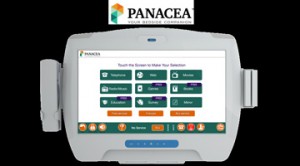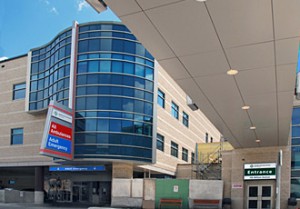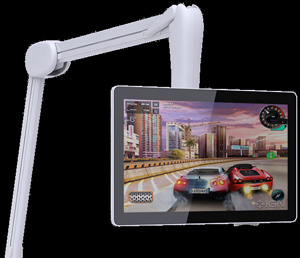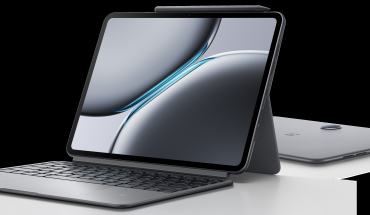Touchscreen technology, on-demand content and Web-inspired user guides are not just for the home entertainment centre – they are key components of hospital information systems that are being widely used to support patient care.
Whether it is to bring entertainment options to the patient, medical information to the health care provider, or more meaningful communications between a bed-ridden patient and his or her friends and family, digital technology is taking its place in the overall palette of products and services that can contribute to a patient’s treatment and recovery.
An award-winning ‘made-in-Canada’ solution is one of the leading systems for bedside content delivery, and it’s being rolled out to reach more than 500 beds at a prestigious Winnipeg hospital and teaching facility.
The first of a planned three phase installation project at Health Sciences Centre (HSC) Winnipeg has now been completed, and patients are now using the powerful bedside entertainment platform called Panacea.
Patients have instant access to TV, video, phone, music, games, social media and Internet sites. Hospital staff use the very same unit to access clinical records and treatment charts about the patient, as well as other relevant health care information.

The Panacea touchscreen device brings bedside content and information to hospital patients and health care providers.
In its first phase, HSC is offering both free and subscription options on the system: hospital information, patient education, games, books and radio services are delivered free, while TV, phone, Internet, movies and other features are fee-for-service.
Regardless of the system’s entertainment features and options that can make a stay less stressful, the system is really designed to make a hospital stay shorter overall, says Monika Gawthrop, a Manager of Patient Care at HSC.
“Support of family and friends is essential to facilitating excellent care for our patients,” she describes. “Our patients often do not live in Winnipeg, and as a result, may not have visitors while in hospital.” She says she can see for herself how a patient’s ability to stay connected can be key to recovery, particularly with long term patients. “The ability of family and friends to encourage, support and promote hope for our patients any time of the day or night, no matter where they live, has made a positive impact.”
The Panacea system and other information and communication technologies are having a positive impact of overall hospital operations, as well.
HSC Winnipeg is the province’s largest health centre, with an interdisciplinary team of nearly 8,000 staff and volunteers who serve people in Manitoba, northwestern Ontario and Nunavut. HSC is also the designated Trauma Centre for Manitoba, so it is a busy and vital institution.

Manitoba’s flagship patient treatment and health care facility, HSC Winnipeg also plays a key role in educating health care professionals.
Hospital administrators can access an Executive Dashboard along with detailed reports showing services being used, trends and up-to-date financial information providing business intelligence in real time.
A special Bed Asset Management system can be accessed through the touchscreen, and used by health care providers to speed up turnaround time for bed usage by tracking patient transfers and discharges, notifying housekeeping staff immediately when rooms need cleaning – which reduces room ‘down time’ by several hours, reduces patient wait times for beds and increase revenue flow for bed usage – all key to improving patient care.
Panacea was developed by i3 Solutions, a Mississauga, ON-based application software and infrastructure support service company, working in the health care, manufacturing, and financial services sectors.
The company has a sales partnership with TELUS Health, and the Winnipeg roll-out is delivered by TELUS Health on a Barco platform. i3 also works with accessory manufacturers worldwide, including the monitor mounting company ReMedi Technology.
The physical Panacea unit itself meets HSC’s rigorous infection control standards, in a nod to protecting patient safety.
Panacea can scale from a small budget system to a large scale, fully integrated system using wireless or cable feeds, with content libraries that are custom-created or already available from the hospital.
No patient information is stored on the hardware, the company describes, noting that the system is in compliance with patient record protection regulations and security standards.
i3’s health care platform development team was presented with 2014 Microsoft Canada Windows Experience IMPACT Award earlier this summer, one of its innovative partners in 14 categories honoured at the World Partner Conference (WPC) in Washington D.C.
“This is a great example of our i3 culture and business philosophy in action. We listen closely to our clients, then collaborate with them and trailblazing partners to solve common problems for healthcare,” said Peter Christopoulos, i3 Solutions’ Executive Director, who noted the technology partnerships that make delivery and operation of the Panacea system possible, along with further development of the system. “Along with Barco and TELUS Health, Panacea is leveraging the full flexibility, extensibility and security of the Microsoft platform, including Windows 8. ”
-30-
submitted by Lee Rickwood




